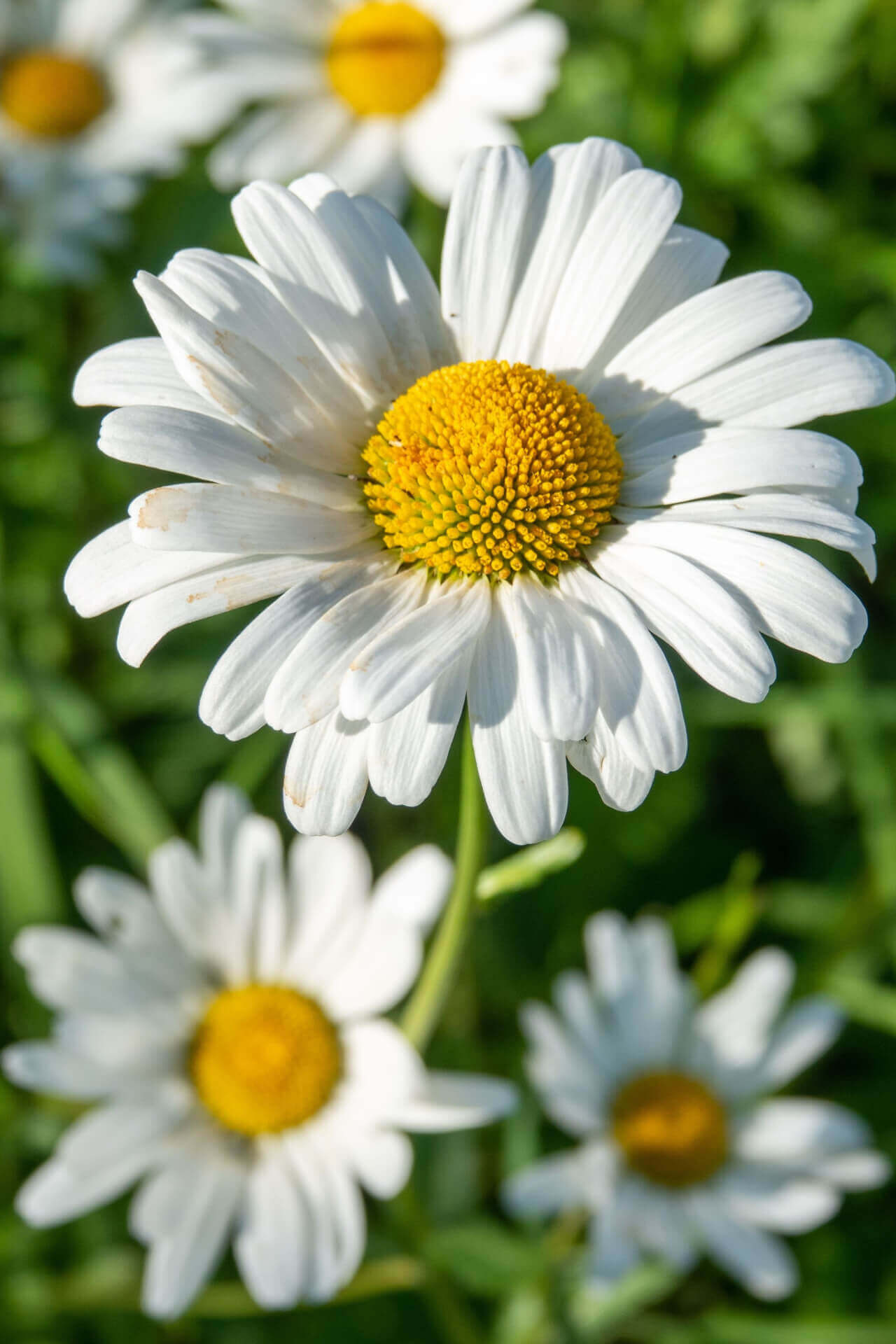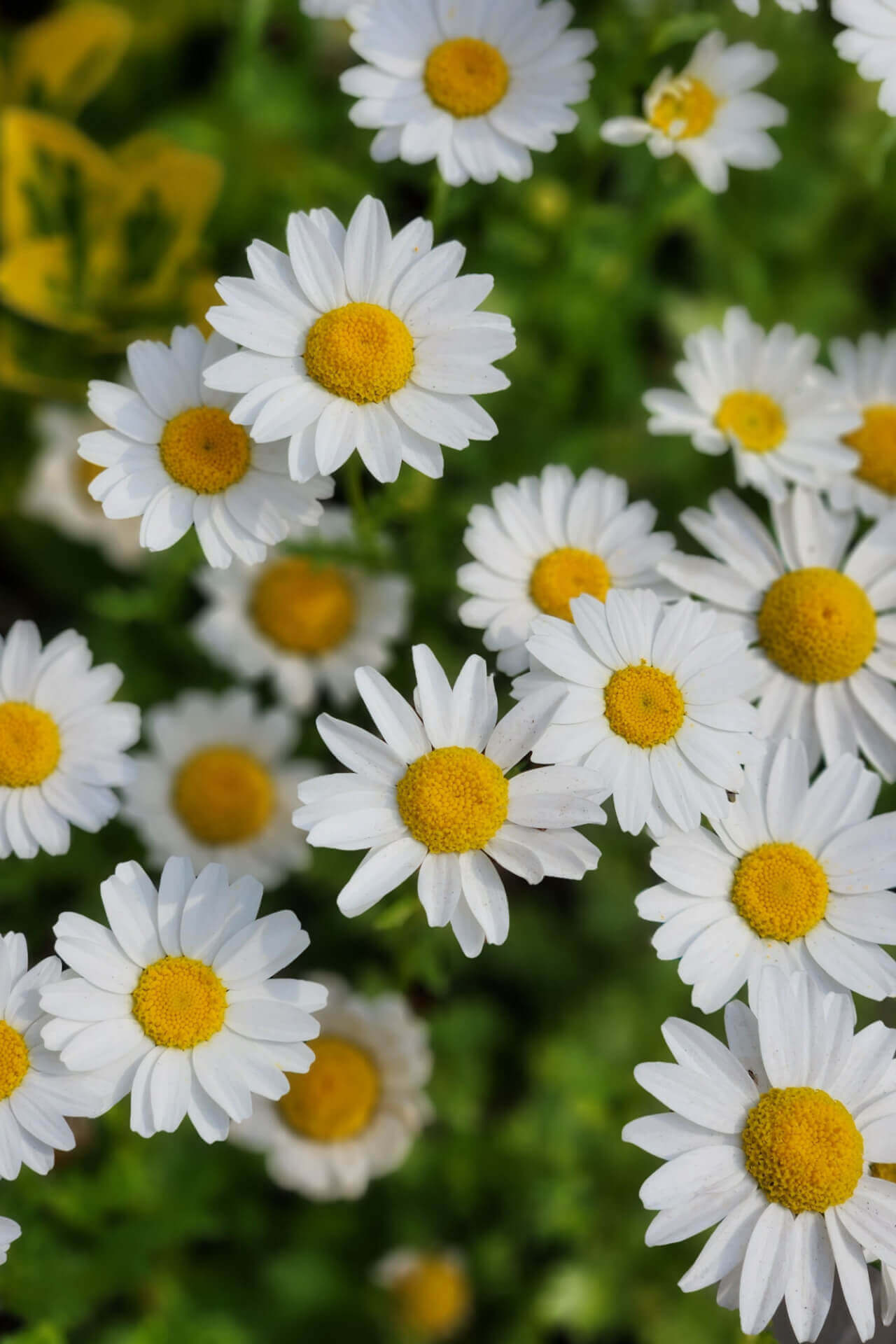Oxeye Daisy
Oxeye Daisy
| Order | Percentage Discount | ||
|---|---|---|---|
| 2-5 | 25% Off | ||
| 6-10 | 30% Off | ||
| 11-25 | 35% Off | ||
| 26-50 | 45% Off | ||
| 51+ | 65% Off | ||
Couldn't load pickup availability
5-7 Days
Under 12"
Full Sun
3-9
Flowering
Bare-root
MT. SD. CO. ID. IN. WA. WY.
Oxeye Daisy - Leucanthemum Vulgare
This sun-loving perennial, the Oxeye Daisy, is a herbaceous perennial that grows in open meadows and sunny fields.
Growth And Appearance
It is a member of the Asteraceae family and typically grows to a height of 1-3 feet (30-90 cm) with a spread of about 1-2 feet (30-60 cm). The plant has dark green leaves that are deeply lobed and toothed, and it produces numerous small, white, daisy-like flowers with yellow centers in the summer.
Oxeye Daisy's Uses
This daisy is famous for its landscaping and sun gardens due to its attractive appearance and easy-to-grow nature. It is often used in meadows, wildflower gardens, and naturalized areas, adding a bright, cheerful element to the landscape. It is also an excellent choice for cottage gardens and informal settings, where its informal and casual look is prized.
Ecological Benefits
In addition to its aesthetic appeal, it is also valued for its ecological benefits. The plant is a valuable nectar source for bees, butterflies, and other pollinators, making it an excellent choice for gardens supporting local wildlife. It also serves as a natural pest control, as it is repellent to many insects.
Low-Maintenance
The plant is an excellent choice for those looking to add a beautiful, low-maintenance plant to their landscaping or sun garden. Its bright, cheerful blooms and ecological benefits make it a great addition to any outdoor space.
This plant is a hardy perennial herb that grows from one to three feet high. It is a beautiful wildflower that will flourish in a wildflower meadow.
However, the Internet has made purchasing seeds in wildflower mixes possible. An essential part of controlling these beautiful yet suffocating wildflowers is pulling them up by the roots or cutting the plant down before it flowers and produces seeds.
A densely planted, well-maintained, mulched flower garden will help shade these wildflower seedlings. The Oxeye Daisies are a beautiful addition to any wildflower garden.
This Is How Your Plants Will Look upon Delivery
Bloom/Foliage Color
White
Shipping date depends on the date displayed and chosen when you order from the product's page.
We only accept returns on plants verified dead. If you think your plants have died, we offer a 1 year warranty, please use use this File a Claim Link to verify dead plants and start with return warranty process.



I am more than happy to say that I have ordered these for my whole family, and they loved them.
Thanks Isabella for your great review! We have passed your kind words on to our team. The Wholesale TN Nursery Team are passionate about providing all of our customers with outstanding experiences and they will be delighted to know they hit the mark with you. We hope that in the future we will be able to provide a similarly excellent experience.






